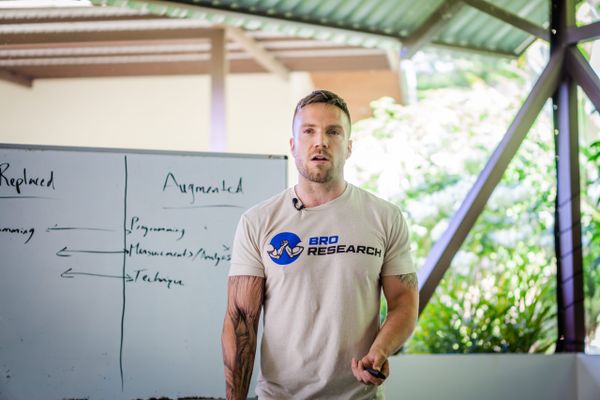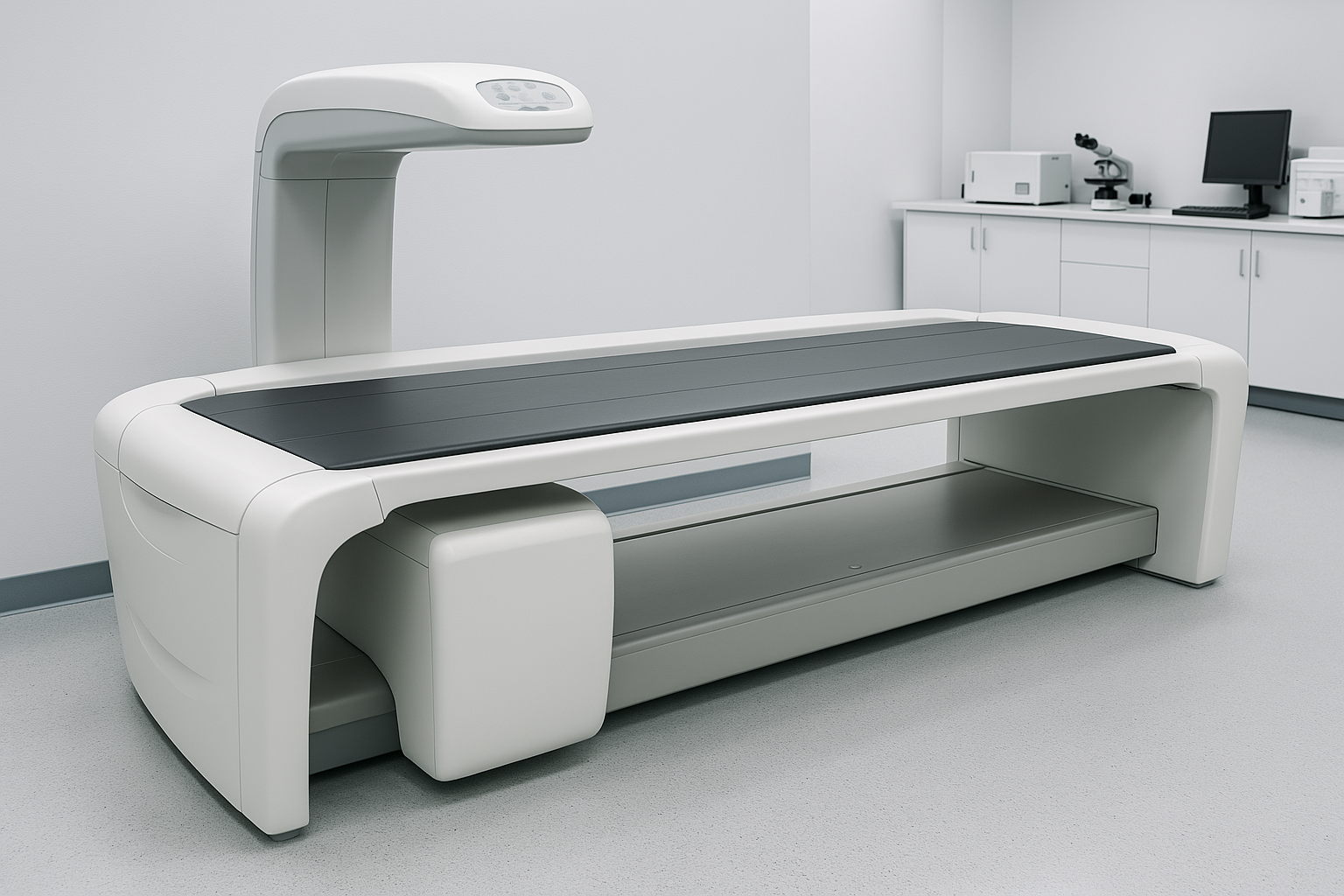I ran my first three-minute all-out critical power test (3AOT) in April, 2015 on a C2 rower in my garage in Texas [1]. It was sunny. The garage door was open and I’ll never forget the feeling after the first 45 to 60 seconds of unpaced maximal effort.
I had no idea what I was in for and you just hang on and pull as hard as possible for the rest of the test. That data is long gone and lives on the rower in Costa Rica, but I’ll never forget the feeling after completing that effort. It was so bad that it took me a decade to do it again.
Even after running every CrossFit WOD, MASS + MASS 2 twice, and I don’t even know how many Wingates there have only been two times where I thought I might have to go to the hospital from a bout of exercise. That first naïve 3AOT critical power test was number one. I thought I was going to absolutely obliterate that test and that is probably why it hit me back so hard.
Critical Power is an important metric because it represents the maximum output that someone can maintain for a very long time and beyond Critical Power (CP) one passes into the unsustainable domain of exercise where task failure will eventually occur and one will reach their maximum levels of oxygen consumption, heart rate, lactate, respiration rate, etc [2].
In 2025 it appears I have caught the hybrid athlete bug once more and one morning I felt like it was time to give the 3AOT a run for its money again. I hit it on a Rogue Echo Bike. Candidly, I held back just a touch in the beginning. It still hit just as hard as I remembered after roughly 45 seconds.
I ended up with a Peak Power of 1156 Watts, a CP of ~263 Watts, and a W’ of 33,000 kJ. W' represents the finite amount of high-intensity work that can be completed above CP. I plan to run the 3AOT again at the end of March to retest via the same methodology.
Additionally, this time around I have also run multiple time trials at set wattages (constant work rate or CWR tests) which is the other more gradual and probably safer means to ascertain CP and W’. The downside of this approach is that it takes multiple tests. The upside is that it isn’t a 3AOT. In training, I recently hit ~325 Watts for a little over 19 minutes, ~375 Watts for ~8 minutes, and ~520 Watts for ~2 minutes. If you plug these into a CP calculator or Golden Cheetah my CP is already well over 300 Watts after a few months of really hard training (FWIW, I have completed well over 20 different kinds of ramp tests).
“Physiologically, CP is important because it defines the boundary between discrete domains of exercise intensity. Below CP, in the ‘heavy’ intensity domain, steady-state values for muscle metabolism (i.e., phosphocreatine concentration [PCr] and pH), blood [lactate], and pulmonary oxygen uptake ( VO2) can be attained. However, above CP, in the ‘severe’ intensity domain, these variables do not demonstrate steady-state behavior. Rather, despite the external power output remaining constant, muscle efficiency is lost, as reflected in the development of the VO2 slow component, and this drives VO2 to its maximum value (VO2max)
Exercise in the severe domain is also associated with continuous reductions in muscle [PCr] and pH and a progressive accumulation of blood lactate, the minimum or maximum values of which are also attained at the limit of tolerance. It is interesting that these respective minimum and maximum values are similar irrespective of whether the severe-intensity exercise bout is relatively short (2–3 min) or relatively long (12–15 min), suggesting that the limit of tolerance during such exercise (and therefore the magnitude of W’) may coincide with the attainment of a certain intra-muscular and/or systemic milieu that the subject cannot, or is not prepared to, exceed.” – Jones et al., 2017 [3]
Critical power is clearly important. It is directly related to and predictive of performance across a range of activities [4, 5]. Also, those with higher VO2 maxes, aerobic fitness, and less body fat tend to have higher critical power values [6, 7].
But, can one increase critical power?
We have reviewed the meta-analyses on HIIT vs. Zone 2 for improving VO2 Max HERE. Thus, to begin to answer this question I sought out some kind of meta-analysis to get a feel for the current state of the literature on improvements in CP. I couldn’t find anything via my normal searching methodologies so I had to go at it the hard way. I manually searched through the first 200 entries in Pubmed that contained critical power in Any Field. This got me to what I believe is the most recent systematic review by Hurd and colleagues published in 2023 [9]. I used this study as a reference as well as a source to mine and trail for other CP intervention studies that they may not have included or were published after this systematic review. I ended up finding quite a few more for a total of eight CP studies on cycling and I have marked these references with asterisks below.
- *Gaesser and Wilson, 1988 [9]
An increase of ~13% in CP for 40 min at 50% VO2peak, 3 days/week and 15% for 10 x 2 min at VO2peak, 3 days/week over 6 weeks.
- *Poole et al., 1990 [10]
A 15% increase in CP after 7 weeks of a high-intensity interval training.
- *Jenkins and Quigley, 1992 [11]
A 31% increase in CP in untrained males after 8 weeks of threshold training at CP for 30-40 min per day with a frequency of three times a week.
- Vanhatalo et al., 2008 [12]
Critical power increase by ~25 W or 10.9% in after four weeks with 12 total high-intensity interval training (HIIT) sessions in active subjects.
- *Kendall et al., 2009 [13]
A ~7% increase in CP from four weeks of HIIT in the creatine supplementation group and a ~4% increase in the placebo group.
- *Kavaliauskas et al., 2017 [14]
A 27% increase in CP from four weeks of sprint interval training (4 x 30-s ‘‘all-out’’ cycling efforts with a 4-min recovery period between each sprint). Endurance sessions were performed twice per week for a total of 8 training sessions and the all baseline testing. This study was in untrained females.
- Yamagishi et al., 2019 [15]
An 8% increase in CP from 6 sessions in two weeks of 30-second sprints interspersed with 4-minute recovery at 40% VO2 Peak. This study was in untrained males and females.
- *Galan-Rioja et al., 2022 [16]
A 5-6% increase in CP from four weeks of either two sessions Short-Medium-Long intervals (a blend of power and time durations designs to deplete W’) or Long Intervals (4 × 16 min around CP) per week. Both groups also performed three sessions of moderate intensity training below CP per week on top of the intervals. This study was conducted in fourteen well-trained cyclists with an average CP of 4.35 ± 0.66 W per kg.
TL;DR - It appears that Critical Power is a metric that can be improved in both untrained and highly trained individuals through a variety of different methods including Sprint Interval Training, High-Intensity Interval Training, Threshold Training, and Moderate Continuous Training. The time frames of the current studies range from a few weeks to a few months. However, remains unknown if certain endurance training approaches may outperform other methodologies in different populations at different points in the training careers.
REFERENCES:
1. Vanhatalo, A., J.H. Doust, and M. Burnley, Determination of critical power using a 3-min all-out cycling test. Med Sci Sports Exerc, 2007. 39(3): p. 548-55.
2. Poole, D.C., et al., Critical Power: An Important Fatigue Threshold in Exercise Physiology. Med Sci Sports Exerc, 2016. 48(11): p. 2320-2334.
3. Jones, A.M. and A. Vanhatalo, The 'Critical Power' Concept: Applications to Sports Performance with a Focus on Intermittent High-Intensity Exercise. Sports Med, 2017. 47(Suppl 1): p. 65-78.
4. Olaya-Cuartero, J., et al., Classification of Male Athletes Based on Critical Power. Int J Sports Med, 2024. 45(9): p. 678-683.
5. Kramer, M., E.J. Thomas, and R.W. Pettitt, Critical speed and finite distance capacity: norms for athletic and non-athletic groups. Eur J Appl Physiol, 2020. 120(4): p. 861-872.
6. Chorley, A., et al., Physiological and anthropometric determinants of critical power, W' and the reconstitution of W' in trained and untrained male cyclists. Eur J Appl Physiol, 2020. 120(11): p. 2349-2359.
7. Goulding, R.P. and S. Marwood, Interaction of Factors Determining Critical Power. Sports Med, 2023. 53(3): p. 595-613.
8. Hurd, K.A., M.P. Surges, and J.W. Farrell, 3rd, Use of Exercise Training to Enhance the Power-Duration Curve: A Systematic Review. J Strength Cond Res, 2023. 37(3): p. 733-744.
9. Gaesser, G.A. and L.A. Wilson, Effects of continuous and interval training on the parameters of the power-endurance time relationship for high-intensity exercise. Int J Sports Med, 1988. 9(6): p. 417-21.
10. Poole, D.C., S.A. Ward, and B.J. Whipp, The effects of training on the metabolic and respiratory profile of high-intensity cycle ergometer exercise. Eur J Appl Physiol Occup Physiol, 1990. 59(6): p. 421-9.
11. Jenkins, D.G. and B.M. Quigley, Endurance training enhances critical power. Med Sci Sports Exerc, 1992. 24(11): p. 1283-9.
12. Vanhatalo, A., J.H. Doust, and M. Burnley, A 3-min all-out cycling test is sensitive to a change in critical power. Med Sci Sports Exerc, 2008. 40(9): p. 1693-9.
13. Kendall, K.L., et al., Effects of four weeks of high-intensity interval training and creatine supplementation on critical power and anaerobic working capacity in college-aged men. J Strength Cond Res, 2009. 23(6): p. 1663-9.
14. Kavaliauskas, M., T.P. Steer, and J.A. Babraj, Cardiorespiratory fitness and aerobic performance adaptations to a 4-week sprint interval training in young healthy untrained females. Sport Sci Health, 2017. 13(1): p. 17-23.
15. Yamagishi, T. and J. Babraj, Active Recovery Induces Greater Endurance Adaptations When Performing Sprint Interval Training. J Strength Cond Res, 2019. 33(4): p. 922-930.
16. Galan-Rioja, M.A., et al., Utility of the W (BAL) model in training programme design for masters cyclists. Eur J Sport Sci, 2023. 23(7): p. 1259-1268.






Related Content
How Does Resistance Training Affect Critical Power and W’?
Mar 15, 2025
What Is Better HIIT or Zone 2?
Feb 09, 2025
2024/25 Programming Template
Nov 01, 2024